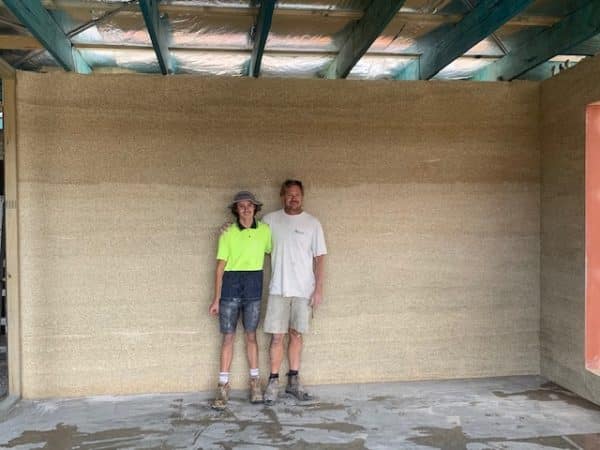
As many of us know by now, Hemp Hurd is a byproduct of Industrial Hemp. Hemp is the non-psychoactive variant of the Cannabis plant.
Unfortunately, its association with marijuana resulted in a whole lot of overlooked potential - for almost a hundred years! But now, people are starting to become aware of its versatility, and finally beginning to accept this plant as the new normal.
Hemp hurd (or shiv) forms the inner core of the plant's stem. Like the bast fibres, hurd possesses a range of physical properties that are highly practical for use in industrial materials - mainly due to its cellulose content.
You can read more about the uses of Bast Fibre here! Seeking to utilise its numerous favourable properties and new-found legal status, modern innovators have started using hemp hurd in more products than ever.
Here’s where we see the future of hemp hurd heading at the moment!
Hempcrete is a high-quality bio-composite building material that can be used as an alternative to traditional options such as concrete. It is formed primarily from hemp hurd mixed with lime and water. Due to hemp's high silica content, it binds with lime without the addition of any chemical agents.
Hempcrete is a lightweight, durable, and well-insulated option for building, and has been used in construction in different regions of the world for many centuries. Certified commercial growers are currently cultivating industrial hemp to be used in the development of sustainable housing across the world.
In fact, one of our biggest passions over here in Margaret River is Hempcrete, which we’re using to build homes in Australia.

Hemp use is not only beneficial to humans but animals too. Hemp hurds can be mulched down into animal bedding and kitty litter.
The mulching process results in a straw-like texture, which is very absorbent and soft. Its absorbency also means you save money in the long run since bedding does not need to be changed as often.
It is easy to clean up and possesses odour control properties. Due to the pest-repellant terpenes naturally occurring in hemp, your animals will be pleased to not have to put with things like mites and fleas as much!
One of the oldest and well-known applications of hemp is in the manufacturing of fabric. They pass through a process known as retting to allow the wood to decompose so fibres can be separated. Hemp yarn is then spun from the fibres and twisted together to form threads, later sealed with wax.
However, one company is going against the grain in 2020 and has managed to develop a new type of material out of the hurd.
This high-quality organically derived activated carbon material is produced from hemp hurd.
Could you speculate on some of the possible uses of a material like this? Make sure you let us know your thoughts in the comments!
Although the bast fibre has a higher cellulose content, the hurd can also be used in making hemp paper. Fibre paper is brittle, thin, rough, and tough, while hurd paper, though not as strong, is easier to produce. It's thicker, softer, and preferred for everyday use.
Hemp hurd has a chemical composition that resembles that of wood. This means that it is a great alternative to using wood as a source for meeting paper needs.
Hemp requires less land to produce the same amount of paper as timber. Hemp paper is a lot more eco-friendly and sustainable, too.
Though the quantity is less than what is in bast fibre, hemp hurd still consists of around 40% cellulose. This means it is also suitable for hemp bioplastics. Currently, plastics are mostly derived from fossil fuels, and we have come to realize that they are terrible for the environment.
Though plant-based plastics may come across as a new invention, they have existed for several years. One variant of these is made from cellulose, a natural polymer. A well-known example of this is cellophane.
In the past (1941), the Ford motor company tried to use hemp in composite plastics, but no one knows why the company abandoned this idea. However, it is far from dead, with many manufacturers attempting a switch to hemp plastics.
Every part of the hemp plant seems to be useful for something, especially the hurds. Since this crop is cheap to grow and a raw material for sustainable products, it is only wise that we look into all its possibilities.
The real question is, why didn’t the governments of the world catch on sooner?